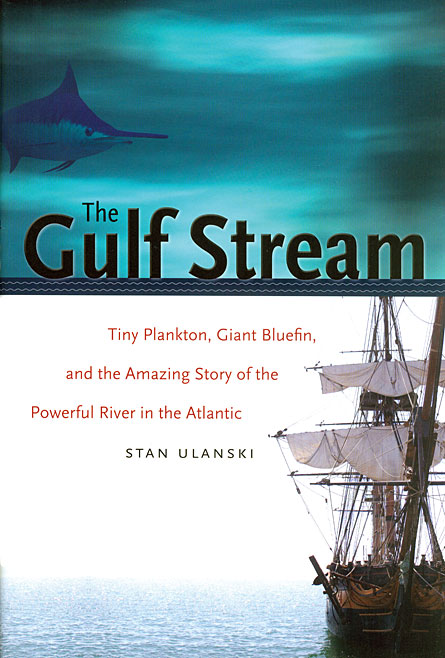The Gulf Stream: Tiny Plankton, Giant Bluefin, and the Amazing Story of the Powerful River in the Atlantic
Review by Nathan Seppa
The Gulf Stream, dramatized by painter Winslow Homer, has had many admirers ranging from Juan Ponce de Léon, who claims to have discovered it, to Ernest Hemingway, who fished its waters.

Ulanski starts this book with a whirlwind tour. Warm waters dead-end in the Caribbean Sea and the Gulf of Mexico, spill out around the Florida coast, barrel north toward CapeHatteras and bounce eastward. But contrary to a widely held belief, the Gulf Stream warms Northern Europe only slightly. It has a greater impact on New England northeasters, which form when warm winds collide with polar air.
Ulanski likens the Gulf Stream to a huge living organism moving below the surface. Its waters contain plankton, jellyfish, sargassum weed, dolphin and wahoo. But its stars are giant bluefin tuna, weighing 300 to 600 pounds.
“The Gulf Stream doesn’t discriminate with regard to its passengers,” Ulanski says. “It’s just the conveyor.”
Ulanski ends with a fascinating account of the Gulf Stream’s role in history. John Cabot, who explored the east coast of North America in 1497, rode the Gulf Stream and prevailing westerly winds of the North Atlantic back to England in only two weeks. Later explorers followed suit. In contrast, the rule of thumb upon leaving Europe became “sail south until the butter melts,” then turn west.
Benjamin Franklin appears to be the first scientist to test the stream, finding it milder than the surrounding Atlantic. It’s warmer by 15 to 20 degrees Fahrenheit. This coursing body of water-bound energy affects climate, ocean life and history, and explains Cabot’s remark that the beer in his hold became oddly warm off the coast of America.
Univ. of North Carolina , 2008, 212 p., $28